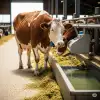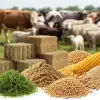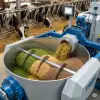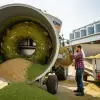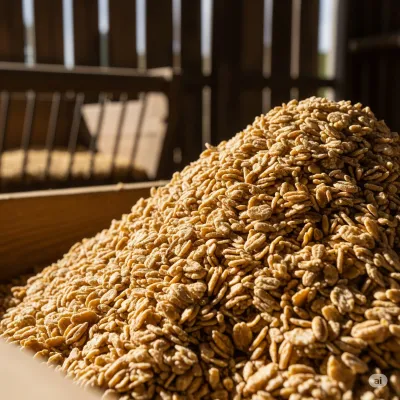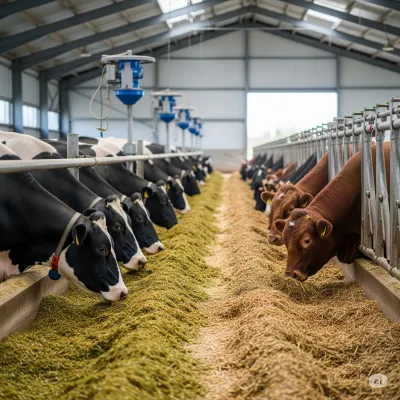Practical Ration Preparation: Implement the Most Efficient Feeding for Your Animals
A practical guide to preparing rations for your animals. Tips to reduce feed costs, maintain animal health, and increase productivity. Correct ration application and points to consider.
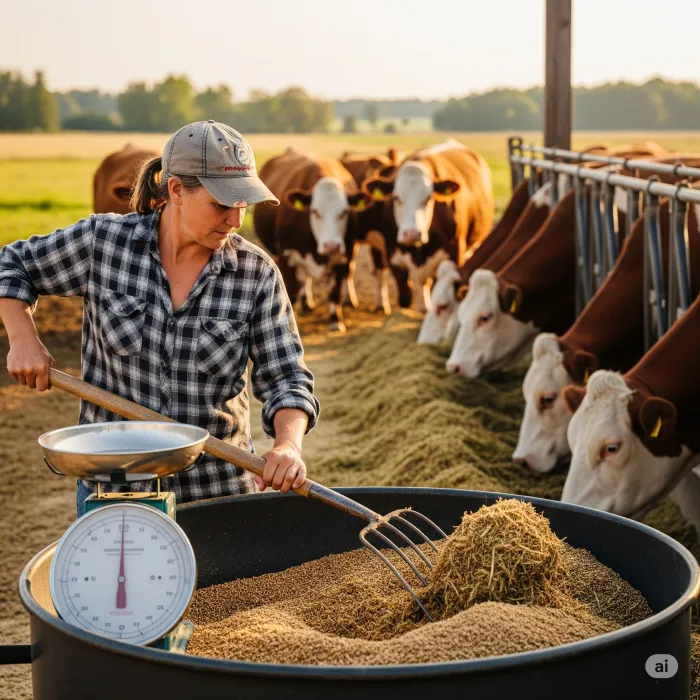
Practical Ration Preparation: Implement the Most Efficient Feeding for Your Animals
Animal feeding is not just about theoretical knowledge; it also requires practical applications and daily routines. In our previous article, "Step-by-Step Ration Preparation," we discussed the basic principles. Now, we will focus on how to put this knowledge into practice on your farm. Practical ration preparation directly affects your animals' health and productivity, while also helping you optimize your feed costs.
1. Step: Know and Store Your Feeds
The first step in practical ration preparation is to thoroughly know the feed raw materials you have. It's important to understand not only their types but also their quality and nutritional values. Having feed analyses done will provide you with the most accurate information. Proper storage of feeds is also vitally important:
- Dry and Ventilated Areas: Store feeds in dry, cool, and well-ventilated storage areas to protect them from moisture, mold, and pests.
- Separate Storage: Store different types of feed (forage, concentrate feed) separately. This prevents confusion and preserves the quality of the feeds.
- First In, First Out (FIFO): During storage, ensure that the feed that came in first is consumed first. This helps you maintain the freshness of the feeds.
2. Step: Use the Right Equipment
To facilitate the ration preparation process and increase its accuracy, you will need some basic equipment:
- Scale: A precise scale is essential for accurately measuring feed ratios. Smaller capacity scales can be preferred for small ruminants, and larger capacity scales for cattle.
- Measuring Cups: Measuring cups are useful for liquid additives or small amounts of feed.
- Feed Mixer (Optional): For large herds, feed mixers provide great convenience for obtaining a homogeneous mixture. In small operations, mixing can also be done with a shovel and manual labor, but attention should be paid to homogeneity.
- Clean Feeders: Regular cleaning of the feeders where feed is presented is crucial for hygiene and animal health.
3. Step: Accurately Mix and Present the Ration
It's as important to accurately mix the feed components in the correct proportions as it is to properly present this mixture to the animals:
- Homogeneous Mixture: Ensure that all feed raw materials are evenly distributed. This is critical to prevent animals from selective eating and to ensure they receive balanced nutrients with every bite.
- Feeding Frequency: Instead of providing the daily ration all at once, dividing it into several meals eases the animals' digestive system and allows for better utilization of the feed. This is even more important for high-producing animals.
- Access to Water: Free access to clean and fresh water is vital for the effectiveness of the ration. No matter how good the feed is, animals cannot perform optimally without sufficient water. Regular cleaning of water troughs should also not be forgotten.
- Feeder Fullness: Be careful not to let feeders be too full or too empty. Overfilled feeders can lead to feed loss, while empty feeders can cause stress to animals and insufficient nutrition.
4. Step: Continuous Observation and Adjustment
Once you have prepared the ration and given it to your animals, the work is not over. The real practical application is to continuously observe how the animals respond to the ration:
- Feed Consumption: Are the animals consuming the feed with appetite? Are there any feed residues left? If there are feed residues, it means either the quantity is too much or the ration is not palatable to the animal.
- Body Condition: Regularly check the body condition scores of your animals. Excessive weight loss or excessive weight gain may indicate a problem with the ration.
- Manure Check: The consistency and appearance of manure provide important clues about digestive health. Digestive disorders (diarrhea, constipation) may indicate that the ration needs adjustment.
- Performance Tracking: Regularly track your production goals such as milk yield, daily live weight gain, or reproductive performance. Deviations from targets indicate that you need to make changes to the ration.
- Behavioral Changes: Observe the animals' general behavior. Lethargy, loss of appetite, or abnormal behaviors can be symptoms of a health problem or ration imbalance.
As a result of these observations, do not hesitate to make small or large adjustments to the ration. Animals' needs can change with seasons, age, or physiological state.
Practical Tips and Common Mistakes
- Avoid Sudden Changes: If you are making major changes to the ration, do so gradually, over several days or weeks. Sudden feed changes can lead to digestive problems.
- Water Quality: The quality of water is as important as the feed. Always provide animals with clean and fresh drinking water.
- Cost Management: Feed costs are one of the largest expenditure items in livestock operations. Try to create the most cost-effective ration by tracking your available feed sources and market prices.
- Expert Support: Especially for beginners or those encountering complex problems, regular support from a veterinarian or animal nutrition specialist is the most appropriate approach for both animal health and economic efficiency.
- Record Keeping: Regularly recording when you applied which ration, the animals' responses, and performance results creates a valuable database for your future feeding strategies.
Practical ration preparation is a continuous process that requires learning and adaptation. By carefully observing your animals and applying the knowledge you gain, you can ensure they lead healthy and productive lives, and at the same time, increase the success of your business.
